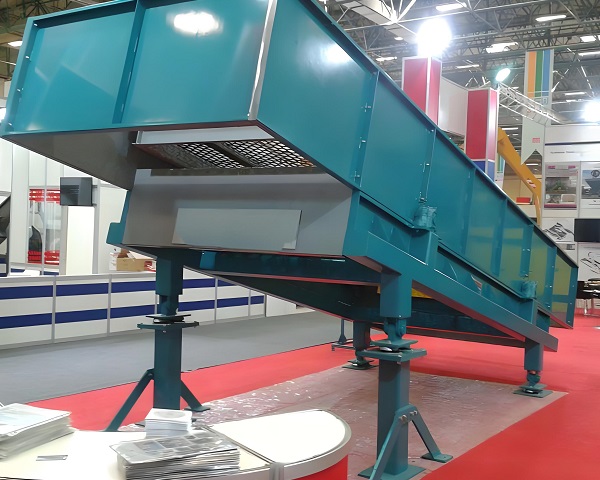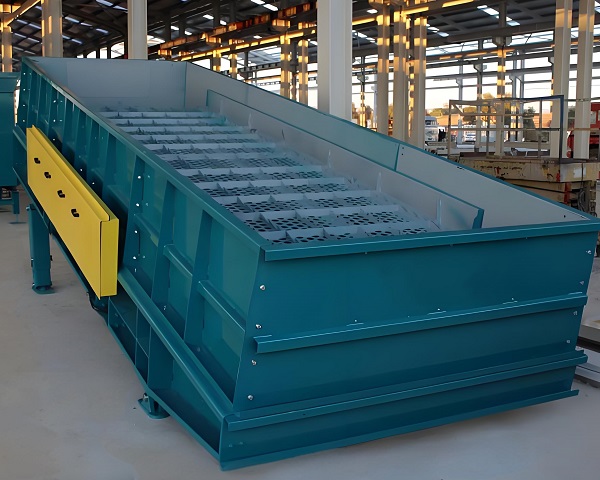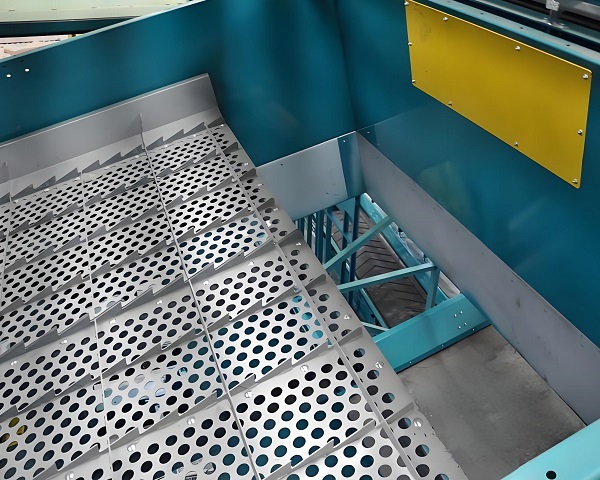With the acceleration of urbanization and the expansion of industrial production, the amount of solid waste generated has skyrocketed, placing increasing pressure on the environment. Effective waste screening is a key step in achieving waste reduction, resource utilization, and harmlessness. As a highly efficient screening device, theballistic screen plays a vital role in waste treatment.

Aballistic screen utilizes the differences in theballistic properties of materials to separate them. Its core operating principle is to use the reciprocating motion or vibration of the screen plate to create differentballistic heights and trajectories on the screen surface. Different types of waste, such as paper, plastic, metal, glass, and organic matter, exhibit differentballistic behaviors on the screen plate due to varying physical properties such as density, elasticity, and shape. Lighter, more elastic materials (such as plastic film and paper) will have a higherballistic height, allowing them to pass over the screen plate baffle and enter the upper fraction. Heavier, less elastic materials (such as metal chunks, glass fragments, and masonry) will have a lowerballistic height and fall through the gaps in the screen plate to the lower fraction, thus separating different types of waste.
Pop-up screens are particularly widely used in municipal solid waste (MSW) management. MSW has a complex composition, including food waste, plastics, paper, metal, glass, fabric, and other materials. In the pre-treatment stage of a waste treatment plant, pop-up screens can efficiently separate different types of waste. For example, mixed household waste, after crushing, enters the pop-up screen. Lightweight, elastic materials such as plastics and paper are screened to the upper portion for further recycling, such as plastic granulation and paper recycling. Heavy, less elastic materials such as food waste and masonry fall to the lower portion. Food waste can be composted or treated anaerobically, while inert materials such as masonry are landfilled. This process significantly improves the resource recovery rate of MSW, reduces landfill volume, and minimizes environmental pollution.

Industrial waste is diverse and of varying nature, and pop-up screens also play an important role in separating these materials. In electronic waste management, which contains large amounts of recyclable materials such as metals (such as copper, iron, and aluminum), plastics, and glass, pop-up screens also play an important role. Theballistic screen can separate heavy materials like metals from lighter materials like plastics and glass, facilitating subsequent metal refining and plastic and glass recycling. In construction waste management, which includes concrete blocks, bricks, rebar, wood, and plastic, theballistic screen can separate heavy, inert materials like concrete blocks and bricks from recyclable materials like rebar, wood, and plastic, thereby improving the resource utilization of construction waste.
Compared to other screening equipment, theballistic screen offers significant technical advantages. First, it offers high screening efficiency. By utilizing theballistic properties of materials, it has excellent selectivity for materials with different physical properties and can achieve efficient separation in a short period of time. Second, it offers strong adaptability. It can process a variety of waste types and particle sizes, and is also effective in screening waste with high moisture content or high viscosity. Third, it offers stable and reliable operation. The device has a relatively simple structure, few wearing parts, is easy to maintain, and can operate stably for long periods of time. Finally, it offers low energy consumption. Compared to some large-scale screening equipment, theballistic screen consumes relatively little power, which helps reduce processing costs.

In practical applications, there are numerous successful cases demonstrating the value of pop-up screens in waste screening. A municipal waste incineration power plant uses pop-up screens to pre-treat incoming waste, separating lightweight combustibles like plastics and paper from other heavier materials. This increases the calorific value of incoming waste and reduces energy consumption and pollutant emissions. After introducing a pop-up screen at a construction waste resource recovery plant, the separation efficiency of construction waste increased by over 30%, significantly increasing the recovery rate of recyclable materials and achieving positive economic and environmental benefits.
However, pop-up screens also present some challenges in their application. For example, the screening effect may not be ideal for materials with unusual shapes or similar physical properties. The equipment's screening parameters require precise adjustment based on the characteristics of the waste, otherwise the screening efficiency will be affected. When processing materials containing large, hard pieces, the screen plate may wear, shortening the equipment's service life.
To further enhance the performance and application scope of pop-up screens, future development directions include the following: First, optimizing the equipment's structural design to improve screening accuracy and stability, and reduce material clogging and screen plate wear. Second, we will develop an intelligent control system that uses sensors to monitor material properties and screening results in real time, automatically adjusting the screen plate's motion parameters to achieve adaptive screening. Third, we will strengthen coordination with other processing equipment to form a complete waste treatment production line, improving overall processing efficiency and resource recovery rates.

The ballistic screen has important application value in waste screening, effectively separating different types of waste and laying a solid foundation for waste resource utilization and harmless treatment. With the continuous advancement and improvement of technology, the application prospects of the ballistic screen in the waste treatment field will be even broader.